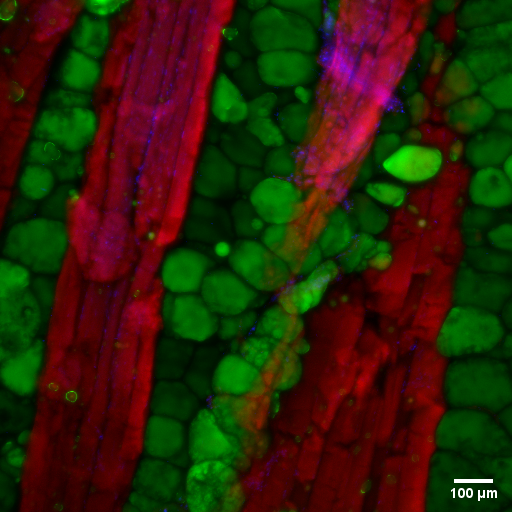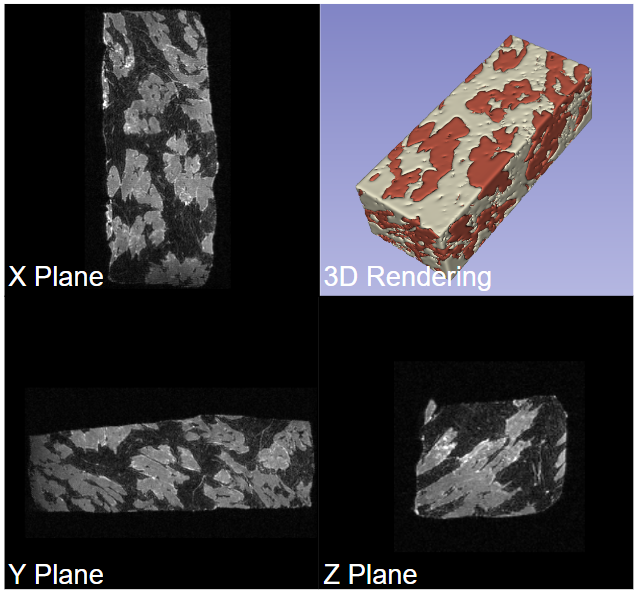Curating sustainable meat alternatives
Using cellular agriculture, the Abbott lab is working on a sustainable meat alternative that is safe and tastes good, without needing to sacrifice any animals.
Creatively utilizing biomaterials to help solve real-world problems has been an ongoing research focus for the Abbott lab, and their latest project is no exception. The STEM savvy, female-driven team at Carnegie Mellon University’s College of Engineering is working on 3D printing a Wagyu steak using lab-grown fat and muscle cells from a cow. The big idea is to produce an animal-based product that is safe and tastes good, without needing to sacrifice any animals.
“As the world’s population grows and demand for animal proteins increases, the current agricultural supply chain is compromised, not to mention environmental, public health, and food security concerns that stem from today’s concentrated animal feeding operations,” explained Rosalyn Abbott, an assistant professor of biomedical engineering. “Historically, my lab has focused on tissue engineering and examining the role of fat accumulation in a variety of diseases and applications. Our cultivated meat research is an extension of the techniques we traditionally use in the lab to develop disease models or approaches for regenerative medicine.”
The process to create cultivated meat is referred to as cellular agriculture; an exciting new field that is gaining momentum. Besides the ethical advantage of sacrificing fewer animals, cultivated meat products will reduce agricultural land use, water consumption, and greenhouse gas emissions. These products can also be cultured in a matter of weeks versus the years required for traditional livestock and offer a more stable option that is not affected by weather or disease.

Source: Abbott Lab
Confocal images of Wagyu beef, to show the fat distribution in the muscle.
3D printing a steak comes with some unique challenges, including the need for custom-built technology and modeling. Lindsey Huff, a Presidential Fellow Ph.D. student in the Abbott lab, retrofitted a standard plastic printer into a dual nozzle bioprinter that will be used to simultaneously print fat and muscle. She also led efforts to conduct an MRI scan on a piece of A5 Japanese Wagyu steak, to generate a 3D rendering of the fat that is found between the muscle fibers, i.e., the marbling effect. Bioprinter and CAD model of Wagyu in hand, the group is now focusing on perfecting the necessary 3D bioprinting techniques.

Source: Abbott Lab
MRI of fat and muscle (the “blueprint”) and CAD model of fat and muscle.
“We have been successful in 3D printing fat, which was a challenge due to the buoyancy of fat cells and how fragile they are under stress, and will be moving to 3D printing muscle soon,” said Huff. “We are also working on optimizing the dual printing parameters, so that we can recreate the microstructure of Wagyu marbling. Once we accomplish that, we will use our blueprint from the MRI to precisely 3D print fat and muscle with lab-grown cow cells to emulate a Wagyu steak.”
The Abbott group’s work has been featured by Robert Downey Jr.’s Footprint Coalition and recently received generous NSF CAREER Award funding to advance its progress. Their research focuses on improving flavor and texture of cultivated meat, which they hope will enhance consumer acceptance of these new food products.
“This is really an exciting area for us to get involved in, that leverages our biomedical engineering expertise to support the evolving cellular agriculture landscape,” added Abbott.
